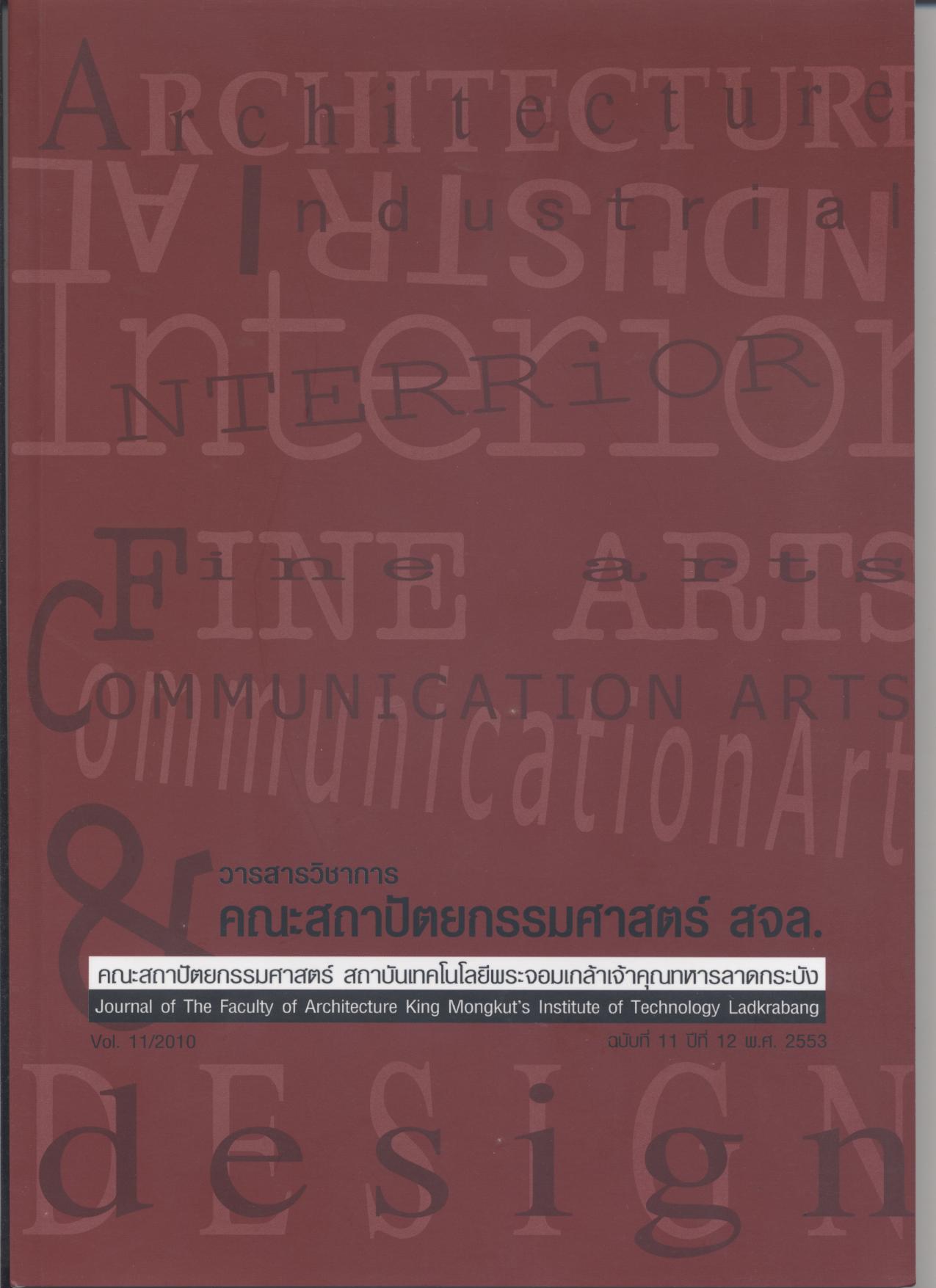การศึกษารูปแบบวัสดุผนังเบา เพื่อการป้องกันความร้อนเข้าสู่อาคารพักอาศัย สำหรับผู้มีรายได้น้อย กรณีศึกษา : โครงการบ้านเอื้ออาทร การเคหะแห่งชาติ
Main Article Content
Abstract
บทคัดย่อ
บทความนี้เป็นส่วนหนึ่งของวิทยานิพนธ์เรื่อง การศึกษารูปแบบวัสดุผนังเบา เพื่อการป้องกันความร้อนเข้าสู่อาคารพักอาศัย สำหรับผู้มีรายได้น้อย กรณีศึกษา : โครงการบ้านเอื้ออาทร การเคหะแห่งชาติ เนื่องจากปัจจุบันนั้น มีการศึกษาถึงคุณสมบัติการป้องกันความร้อนให้กับตัวอาคารด้วยวัสดุผนังประเภทต่าง ๆ ซึ่งมีจุดประสงค์เพื่อหารูปแบบของการป้องกันความร้อนที่มีประสิทธิภาพที่สุด แต่ความเป็นจริงอีกด้านก็คือ รูปแบบอาคารที่มีการใช้งานเป็นจำนวนมากก็คือ อาคารพักอาศัย โดยเฉพาะอย่างยิ่งอาคารพักอาศัยสำหรับผู้มีรายได้น้อย ซึ่งเป็นประชากรกลุ่มใหญ่ของประเทศ แม้ผลสรุปที่ได้จากการศึกษาส่วนใหญ่จะให้ผลลัพธ์เป็นรูปแบบผนังที่ดี มีคุณภาพ และประสิทธิภาพในการป้องกันความร้อนเข้าสู่ตัวอาคาร แต่ไม่ได้สอดรับกับรูปแบบกลุ่มอาคาร หรือ ความเป็นไปได้ในการก่อสร้างที่พักอาศัยสำหรับผู้ที่มีรายได้น้อย และ ไม่สอดคล้องกับภาวะเศรษฐกิจของประเทศในปัจจุบัน จึงทำให้การรณรงค์ให้เกิดการใช้วัสดุประหยัดพลังงานไม่ได้รับการตอบรับจากประชากรผู้ที่มีรายได้น้อย เนื่องจากข้อจำกัดทางด้านราคาค่าก่อสร้างและเทคโนโลยีการก่อสร้าง ที่สูงเกินไป
การศึกษารูปแบบวัสดุในวิทยานิพนธ์ฉบับนี้ จึงให้ความสนใจไปที่ วัสดุผนังเบา ซึ่งเป็นวัสดุที่ก่อสร้างได้ง่าย รวดเร็ว และ มีประสิทธิภาพในการป้องกันความร้อน ที่เหมาะกับสภาพอากาศในประเทศไทย รูปแบบผนังที่นำเสนอ จากการศึกษานี้ จึงมุ่งตอบสนองต่อประโยชน์ 3 ด้าน คือ การประหยัดพลังงานจากการป้องกันความร้อนเข้าสู่อาคาร , การก่อสร้างที่ง่าย , มีราคาไม่สูงมาก เหมาะสำหรับผู้มีรายได้น้อย และ ส่งเสริมการใช้วัสดุผนังที่ผลิตได้ในประเทศ ดังนั้น รูปแบบผนังที่ได้จากการศึกษานี้จึงน่าจะเป็นตัวเลือกที่ใช้พิจารณาในการก่อสร้างได้เป็นอย่างดี อีกตัวเลือกหนึ่ง
คำสำคัญ : วัสดุผนังเบาป้องกันความร้อน , ประหยัดพลังงาน , ผู้มีรายได้น้อย , บ้านเอื้ออาทร
Abstract
This article is the part of the thesis on the title of a study of lightweight wall material patterns for heat protection for low- income housing Case study : EUA-ARTHORN Housing Project , National Housing Authority. At the present, there are many studies of the heat protection materials .The objectives of these studies are to explore (or to find) the most effective of the heat protection material. Actually, the heat protection materials have been used in many housing types especially, low- income housing. These studies conclude that the heat protection materials are effective but not comply with low-income housing and the economic situation, causing the campaign of using energy saving materials are not accepted by the low-income population . Due to the limitations in price and construction technology is too high. That is the reason why the energy saving campaign was not responded from the low-income people.
Therefore, this study focues on the lightweight wall material which is easy, quick and effective for the construction in the term of the heat protection, and proper with the weather. From this study which is focus on 3 benefits: 1) energy saving from the heat protection into the building, 2) easy for construction and 3) inexpensive cost that proper for the low-income people and encourage the people to use the material which is produce in the country. The type of the wall that found in this study should be one of the criteria for construction
Keyword: Lightweight wall material, Heat protection , Energy saving, Low-income people , EUA-ARTHORN Housing Project
Article Details
This work is licensed under a Creative Commons Attribution-NonCommercial-ShareAlike 4.0 International License.
Copyright Transfer Statement
The copyright of this article is transferred to Journal of The Faculty of Architecture King Mongkut's Institute of Technology Ladkrabang with effect if and when the article is accepted for publication. The copyright transfer covers the exclusive right to reproduce and distribute the article, including reprints, translations, photographic reproductions, electronic form (offline, online) or any other reproductions of similar nature.
The author warrants that this contribution is original and that he/she has full power to make this grant. The author signs for and accepts responsibility for releasing this material on behalf of any and all co-authors.


